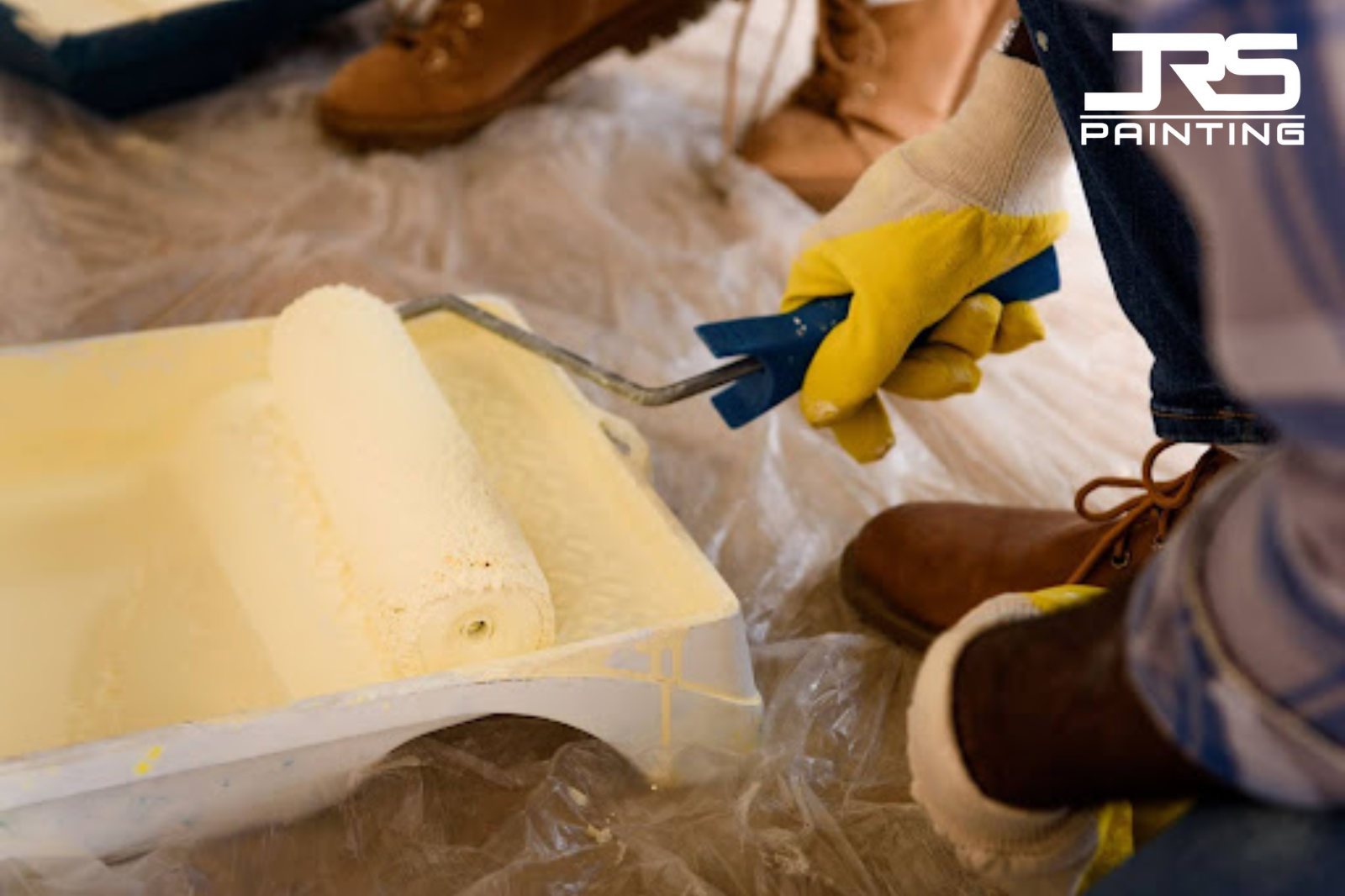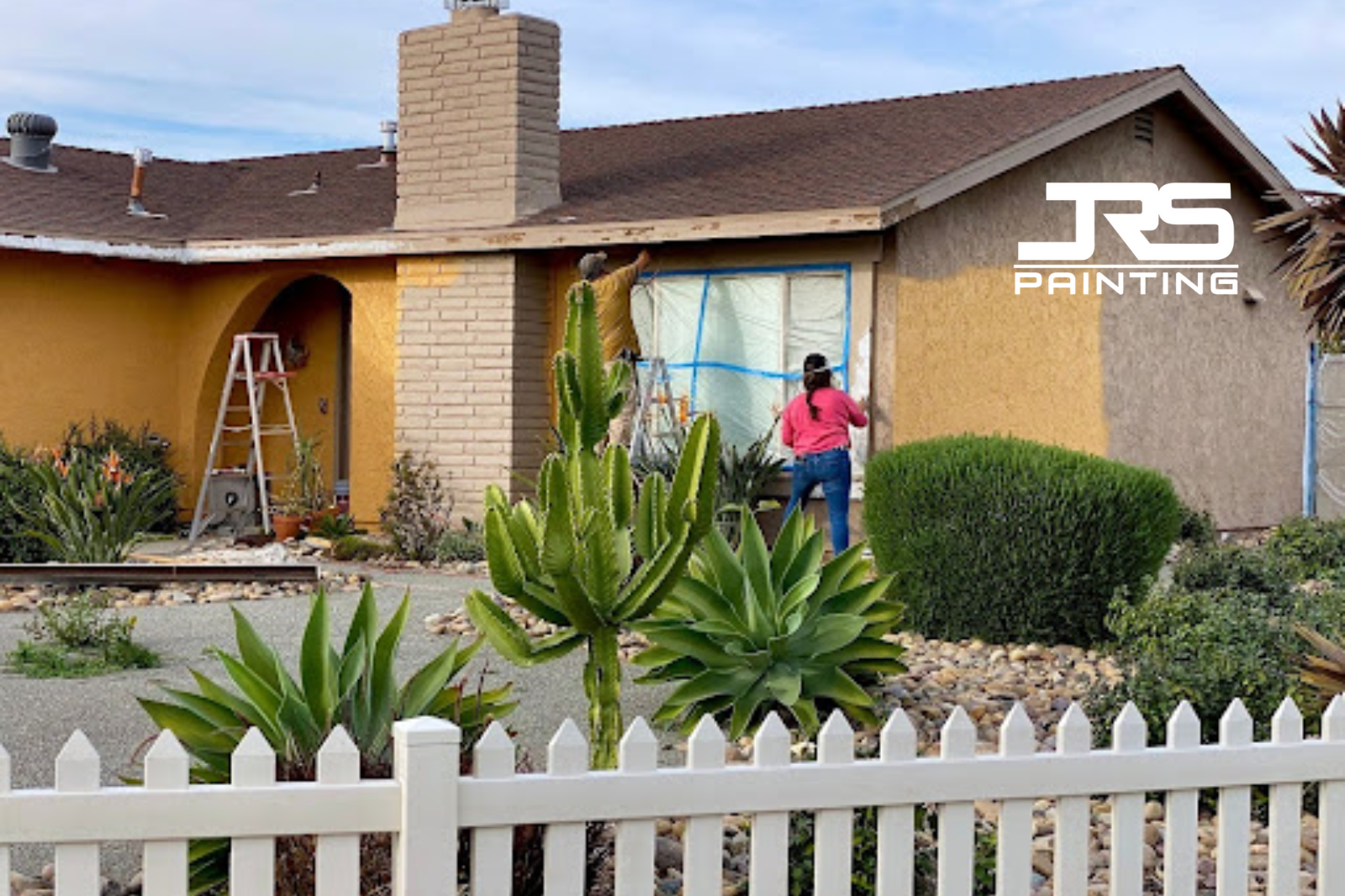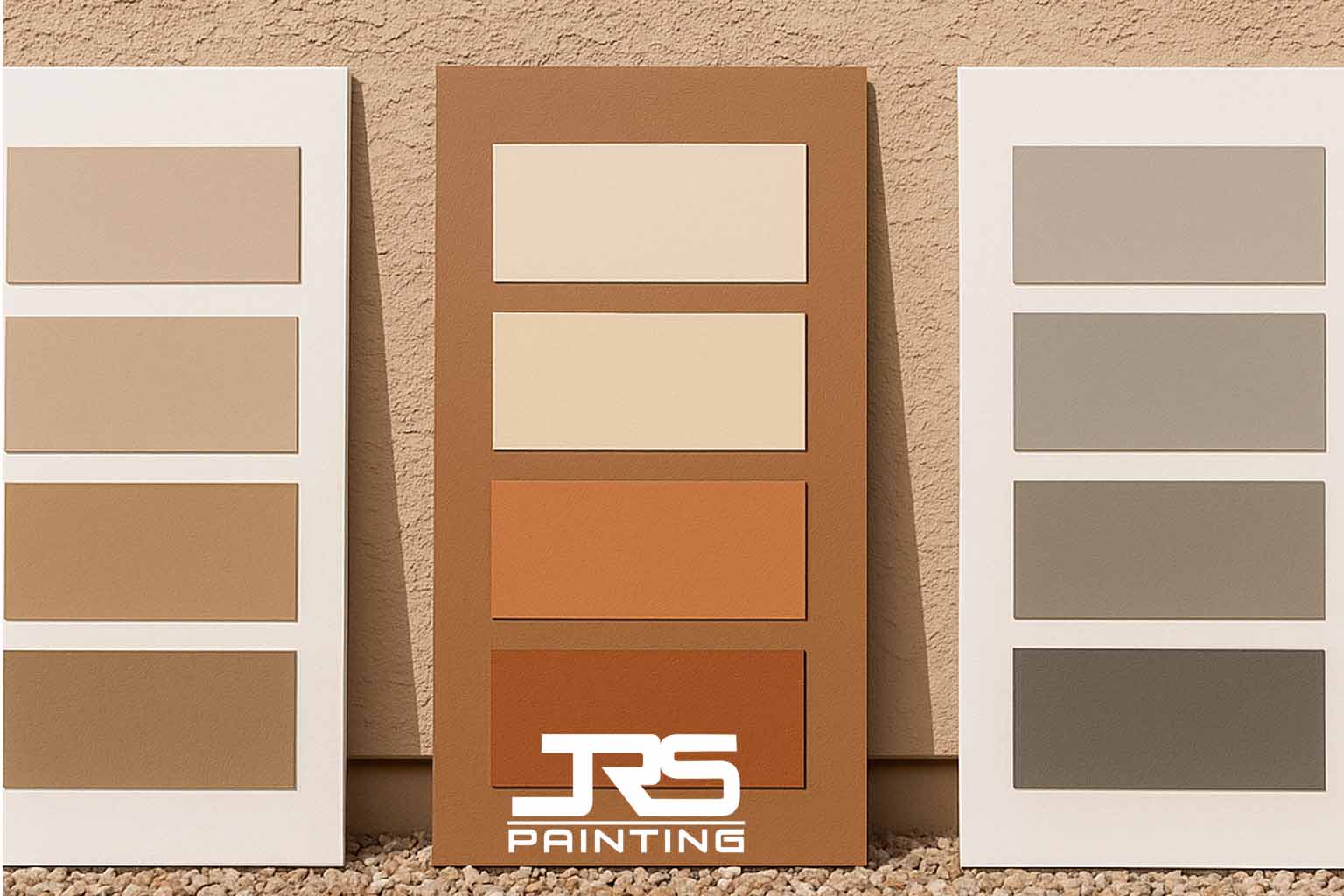
Choosing the right exterior paint colors for your Phoenix home isn't just about curb appeal—it's about selecting hues that can withstand the intense Arizona sun, extreme heat, and desert dust while keeping your home looking fresh for years to come. The desert climate presents unique challenges that require thoughtful color selection to ensure your investment looks beautiful and lasts.
Why Color Choice Matters in Arizona
Living in the Sonoran Desert means your home's exterior faces some of the harshest conditions in the country. The intense UV rays, temperatures that regularly exceed 110°F, and frequent dust storms create a perfect storm for paint failure when the wrong colors and formulations are chosen.
Fading Issues with Low-Quality Pigments
Red and blue pigments are particularly vulnerable to fading, often becoming chalky or completely washing out within just a few years. This is why investing in high-quality, fade-resistant paint formulations is crucial for desert homes. Premium paints use advanced pigment technology that maintains color integrity even under extreme solar exposure.
Reflective Colors vs. Dark Tones in the Heat
Dark colors absorb significantly more heat than light colors, which can cause several problems in Phoenix's climate. Deep blues, blacks, and dark grays can reach surface temperatures of 180°F or higher, causing paint to expand and contract dramatically. This thermal stress leads to cracking, peeling, and premature failure. Additionally, dark exterior colors can increase your home's cooling costs by absorbing heat that radiates inward.
Light and reflective colors, on the other hand, can reflect up to 80% of solar heat, keeping your exterior surfaces cooler and reducing the thermal stress on your paint system. This not only extends the life of your paint job but can also contribute to lower energy bills.
Top Color Palettes That Work Well in the Desert
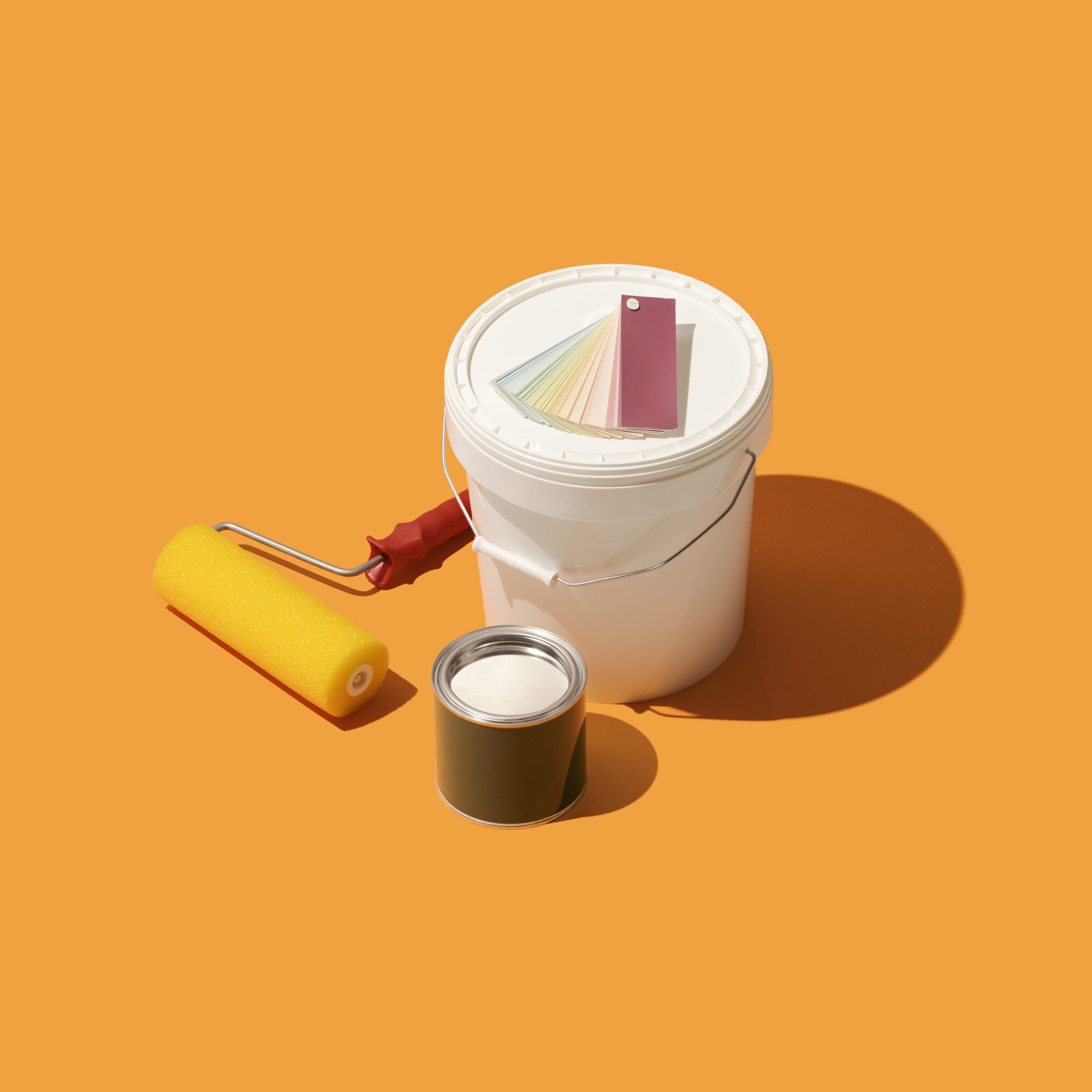
The desert landscape offers incredible inspiration for exterior color schemes that both complement the natural environment and perform well in Arizona's climate.
Earth Tones: Beige, Sand, Taupe
Earth tones are the foundation of successful desert home color schemes. These colors work harmoniously with the surrounding landscape while offering excellent heat reflection and UV resistance. Warm beiges like "Accessible Beige" or "Balanced Beige" provide a neutral backdrop that won't compete with desert sunsets or mountain views. Sandy tones such as "Mesa Tan" or "Desert Sand" literally blend with the environment while hiding dust between washings.
Taupe shades offer more depth than straight beige while maintaining the practical benefits of earth tones. These sophisticated neutrals work particularly well on larger homes where pure beige might feel too flat. Consider layering different earth tones perhaps a warm beige body with slightly deeper taupe trim to create visual interest without straying from the desert palette.
Warm Whites and Off-Whites
Pure white can appear stark and cold against the desert backdrop, but warm whites and off-whites offer the heat-reflective benefits of light colors while maintaining a more organic feel. Creamy whites with subtle yellow or beige undertones complement the golden light that's characteristic of Arizona. Popular choices include "Antique White," "Ivory," and "Vanilla."
Off-whites with gray undertones provide a more contemporary look while still reflecting heat effectively. These colors work particularly well on modern or transitional architecture. "Accessible Gray" and "Agreeable Gray" are excellent choices that appear almost white in bright desert light but offer more sophistication than pure white.
Accent Colors That Complement Desert Landscapes
While your main color should be heat-reflective and fade-resistant, accent colors on trim, doors, and architectural details can add personality and visual interest. Sage greens echo the desert's native vegetation and pair beautifully with beige and taupe. Warm terracotta or muted orange accents can complement sunset views while remaining HOA-friendly.
Deep blues can work as accent colors when used sparingly on shutters or front doors, as the smaller surface area experiences less thermal stress. Charcoal gray provides a sophisticated contrast to warm earth tones while being more heat-friendly than pure black.
HOA-Friendly Color Tips for Metro Phoenix Neighborhoods
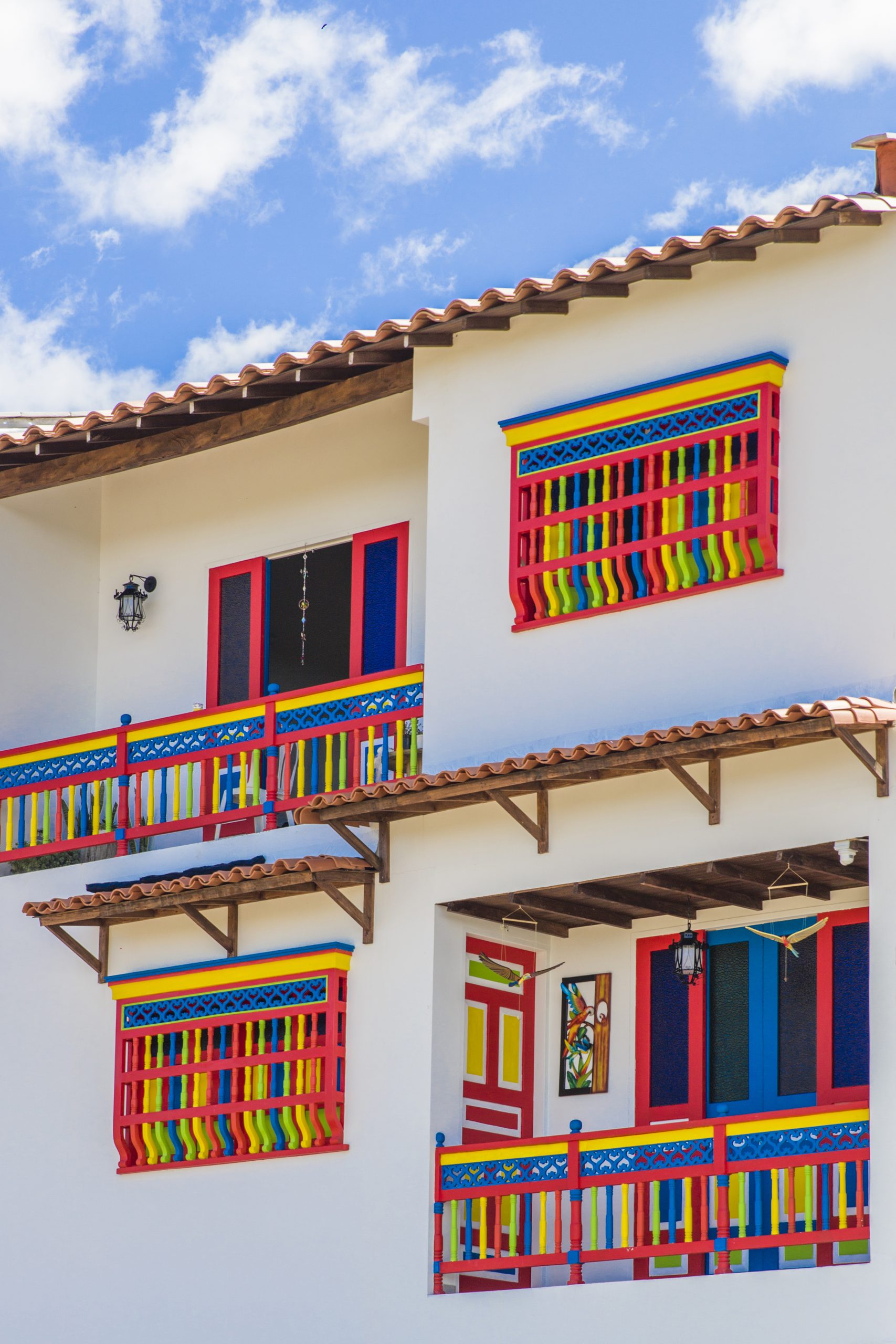
Many Phoenix-area neighborhoods have Homeowner Association (HOA) guidelines that restrict exterior color choices. Understanding these requirements before selecting your colors can save time, money, and potential conflicts.
How to Check with Your HOA
Before making any exterior color decisions, review your HOA's Covenants, Conditions & Restrictions (CC&Rs) document, which should outline specific color requirements or restrictions. Many HOAs maintain an approved color palette or require architectural review committee approval for exterior changes. Contact your HOA management company or architectural committee directly to understand the approval process and timeline.
Some HOAs require paint samples to be posted on your home for a specific period before approval, while others may require professional color boards or detailed proposals. Starting this process early in your planning phase prevents delays and ensures your chosen colors comply with community standards.
Popular Approved Color Families in Ahwatukee, Chandler, Gilbert
In established Phoenix suburbs like Ahwatukee, Chandler, and Gilbert, HOAs typically favor color schemes that maintain property values and neighborhood cohesion. Neutral earth tones are almost universally approved, including beiges, taupes, and warm grays. Desert-inspired palettes featuring sandy tones and muted southwestern colors are also commonly accepted.
Warm whites and off-whites are generally HOA-friendly choices that offer broad appeal. Many communities specifically approve color families rather than exact shades, giving homeowners flexibility within approved ranges. Sage greens and muted blues are often acceptable for accent colors, while bright or bold colors are typically restricted to small areas like front doors.
Paint Type and Finish Also Matter
Selecting the right paint formulation and finish is just as important as choosing the perfect color for Phoenix's demanding climate.
Best Finishes for UV Resistance
Flat finishes might hide surface imperfections well, but they're the most vulnerable to UV damage and difficult to clean—not ideal for desert conditions. Eggshell and satin finishes offer better durability and cleanability while still providing a sophisticated appearance. These finishes resist fading better than flat paint and can withstand occasional pressure washing to remove desert dust.
Semi-gloss finishes provide excellent durability and UV resistance, making them ideal for trim, doors, and architectural details that receive direct sun exposure. While they show surface imperfections more readily, their superior performance in harsh conditions makes them worth considering for high-exposure areas.
Brands and Formulas That Hold Up
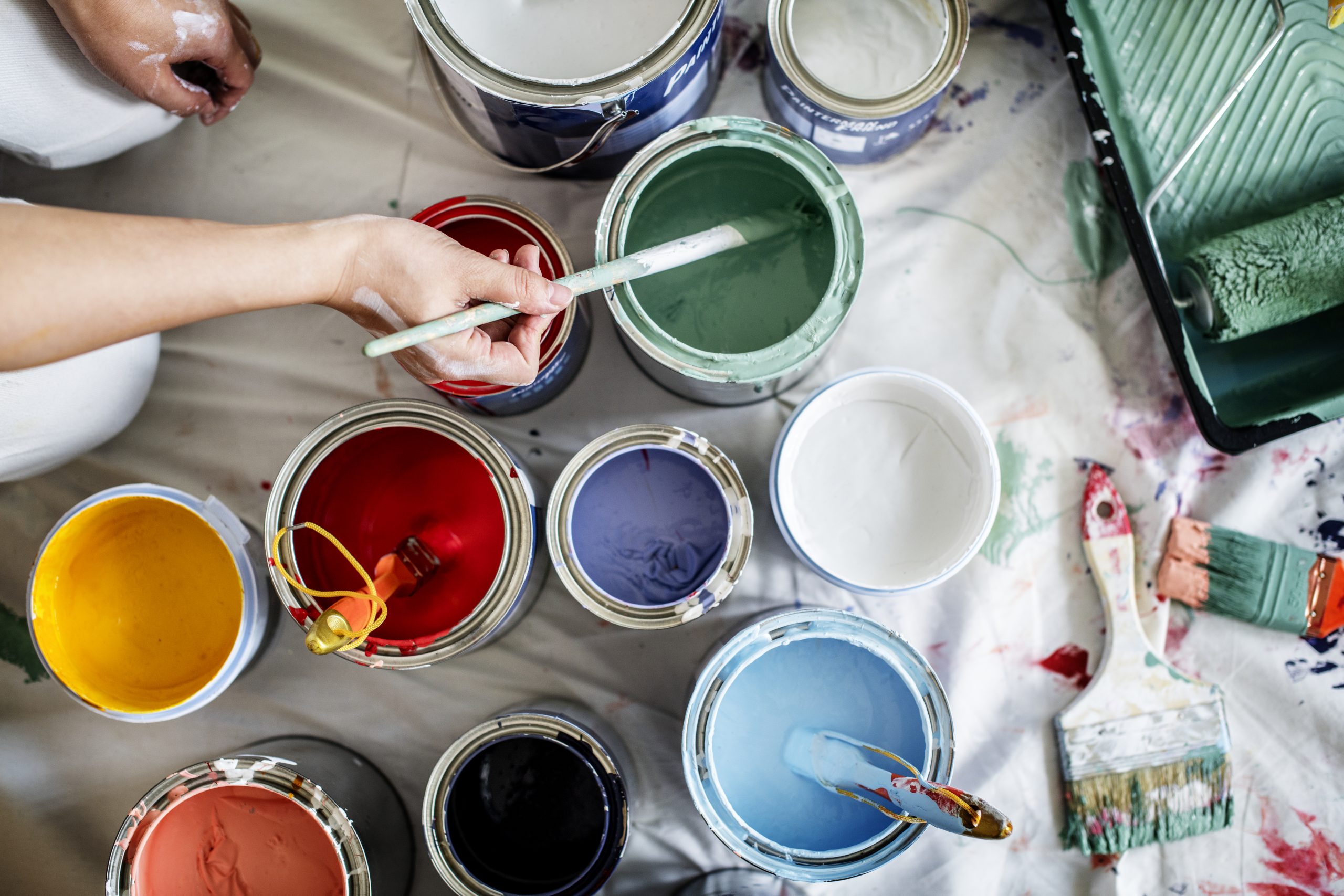
Not all paint brands perform equally in Arizona's extreme conditions. 100% acrylic latex paints generally outperform oil-based paints in desert climates, offering better flexibility, fade resistance, and breathability. Premium lines from major manufacturers often include specific UV-resistant formulations designed for southwestern climates.
Look for paints with ceramic or reflective additives that enhance heat reflection and durability. Some manufacturers offer specific "desert" or "southwestern" paint lines engineered for extreme sun exposure. Elastomeric coatings can be excellent for stucco homes, providing superior flexibility and crack resistance in temperature extremes.
Final Tips from Jr's Painting Experts
Successfully painting your Phoenix home exterior requires combining the right colors with proper preparation and application techniques. Here are professional insights for achieving long-lasting, beautiful results in the desert climate.
Timing matters immensely in Phoenix. Schedule your exterior painting project during cooler months (October through April) when temperatures are more moderate and humidity is lower. Avoid painting during summer months when surface temperatures can exceed safe application limits and cause paint to cure improperly.
Surface preparation is critical in desert conditions. Thoroughly clean all surfaces to remove dust, dirt, and chalky paint residue. Prime all bare surfaces with a high-quality primer specifically designed for your substrate material. Pay special attention to areas with previous paint failure or sun damage.
Consider a maintenance schedule to keep your paint looking fresh longer. In Phoenix's dusty environment, annual pressure washing can extend your paint's life significantly. Touch up small chips or cracks immediately to prevent larger problems, and inspect your home's exterior regularly for signs of wear.
Quality pays off in desert conditions. While premium paints cost more initially, they typically last 2-3 times longer than budget alternatives in Arizona's harsh climate. Factor in the cost of more frequent repainting when comparing options—investing in quality paint and professional application often proves more economical long-term.
The desert's unique beauty provides endless inspiration for exterior color schemes that are both practical and stunning. By choosing heat-reflective colors, fade-resistant formulations, and appropriate finishes, your Phoenix home can look beautiful for years while standing up to everything the Arizona sun can deliver.
Frequently Asked Questions
Conclusion
Choosing exterior paint colors in Phoenix is more than a design decision—it’s about durability, energy efficiency, and compliance with local HOA standards. With the right colors and professional application, your home can stand strong against Arizona’s extreme sun and dust while looking stunning for years to come.
Contact Jr’s Painting today, we’ve helped homeowners across Metro Phoenix protect and beautify their homes with expert color guidance and professional painting services designed for desert conditions. Whether you’re refreshing your exterior or starting a complete transformation, Jr’s Painting ensures flawless results that last.
Related Articles
Exterior Painting, Residential Painting


